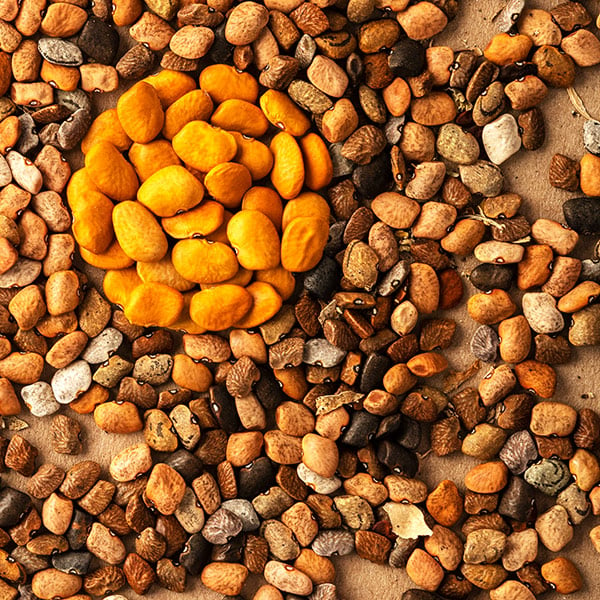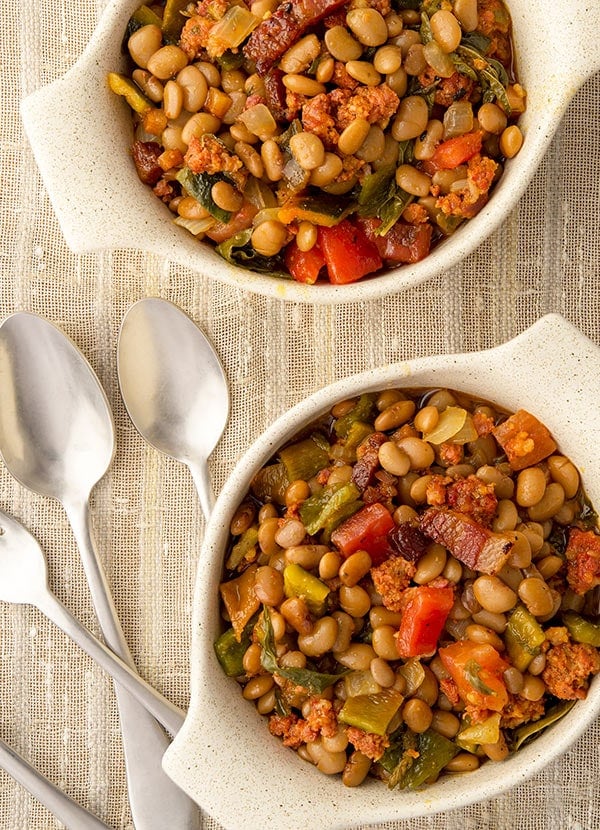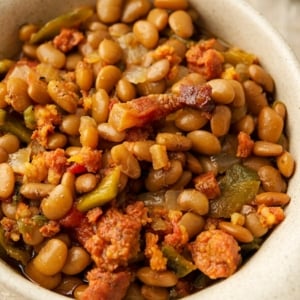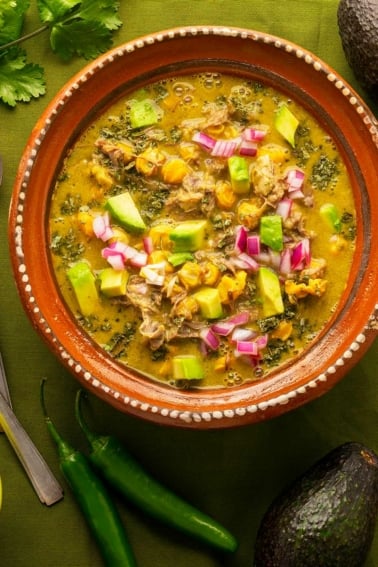As an Amazon Associate I earn from qualifying purchases.

If you’re looking for the easiest bean in the world to grow, it would be tepary beans — if you live in a dry place.
Tepary beans, Phaseolus acutifolius, are related to but not the same as the common bean, and they will not crossbreed. This makes them an excellent addition to a garden that has other beans, which are notorious for crossing inadvertently. Blame the bees.
Their origin is believed to be in northern Mexico, but they are grown in arid regions all the way down to Costa Rica. In southern Mexico they call them escomite beans. I first read about them in my colleague Ken Albala’s charming book Beans: A History, and I knew immediately that they would be a good choice for my garden in Sacramento.
But would I want to eat them? Deciding to buy some first, I found that you can indeed buy tepary beans online, mostly brownish tan ones, and a few places will sell you black tepary beans as well as white tepary beans.
I bought all of them and settled on the orangey-brownish tan ones. The black ones are nice, but regular black beans are better. Ditto with the white tepary beans. They are good, but there are other white beans better. The brown ones are meaty, dense and vaguely sweet. I use them in place of pinto beans.

So why grow tepary beans? Unlike pretty much every other bean out there, this one is drought and heat tolerant. It gets hot where I live; 100°F is pretty close to the norm in summer here. And it’s dry, with afternoon humidity typically falling to about 5 to 10 percent. And no rain from about Memorial Day to often October.
My other beans struggle in this, and some, like runner beans, downright hate it. But tepary beans thrive. In fact, they will not do well until and unless it gets really hot and the plants undergo stress. As an experiment, I watered the hell out of one bean and it grew to enormous size… no flowers. And then, as soon as I cut water off from the plant, boom — lots of flowers and then lots of beans.
I’ve also noted that tepary beans are “half runner” beans, in that they really want to coil up a pole or trellis, but only to a point. Unlike, say, a runner bean which is likely the origin of the Jack and the Beanstalk story, tepary beans will only run up a pole a few feet. But let them do this if at all possible because your yield on a tepary that runs up a support will be triple that of one grown as a bush bean.
As a side note, I have not yet used them in a Three Sisters garden (corn + beans + squash), but they are on the list for next year because the way I grow my corn is probably better for a drought tolerant bean than a common bean.
You can eat tepary beans as fresh, shell beans, but I never do. I always let them dry fully and eat them like a pinto bean. Be careful, though. Since teparies are like cats — only kinda-sorta domesticated — tepary pods will spontaneously pop open if you let them dry too long. This is not always a bad thing. I miss several every year, and find volunteer tepary beans in my garden, which I will often let live.
Speaking of semi wildness, you can actually grow wild teparies, which are the speckly beans in the photos. Native Seeds Search in Arizona sells them, and they are pretty cool. They look like pebbles. But they will pop open almost as soon as they dry fully, so you need to pick them early if you want to eat them.
Incidentally, Native Seeds Search has by far the largest selection of tepary seeds I’ve found yet. I highly recommend them.
One other fun note on tepary beans? They are genetically wobbly, so you will see variation in your crop. What I’ve been doing over the past few years is selecting the beans that are the most orange, with the goal of eventually stabilizing an orange tepary down the road. So far, so good. I’ve also seen variation in the thickness of the pod as well as bean size.
As far as cooking tepary beans, you need to know that they take a bit longer to cook than any other bean, despite their small size. It’s because they are so dense.
Conversely, they are less likely to turn to mush or lose their skins, making them fantastic frijoles de olla, or bean pot beans. If you like Boston baked beans, tepary beans are a great choice.
Since they are firmer than pintos, I like to cook a big batch on, say, a Sunday, eat them as regular beans for the first few days, reheating them each time. Then, by the second or third day, they are cooked a bit past their prime, and then they are perfect for refried beans. This rhythm is similar to common practice in Mexico for all beans.

So how to I like my tepary beans on that first night? I do a version of a classic northern Mexican dish called frijoles fronterizos, or Border Beans. It’s basically a hot bean salad, with cooked beans, chopped crispy bacon, chopped tomatoes and herbs, chiles, onions and garlic.
Served by itself or on tortillas, or mixed into simple rice, it’s a wonderful way to enjoy your harvest.
That said, I have a number of recipes that use tepary beans here on Hunter Angler Gardener Cook, including a New Mexican turkey leg stew, squirrel carnitas, and turkey black bean chile, with black tepary beans.
But frijoles fronterizos puts the tepary beans front and center.
Border Beans
Ingredients
- 1 sprig epazote
- 4 slices bacon
- 1/2 pound Mexican chorizo, loose, not cased
- 1 small white onion, chopped
- 2 cloves garlic, chopped
- 1 poblano chile, roasted, skinned, seeded and roughly chopped (See note below)
- 4 cups cooked beans
- 2 to 4 Roma tomatoes, chopped
- 1/2 cup queso fresco or cotija cheese, crumbled
- Salt and pepper to taste
- Crushed chiltepin chiles, to taste (optional)
Instructions
- Cook the beans – generally you will need 2 cups dry beans to get around 4 cups, but it's not an exact science – in lots of water at a very slow simmer. After about 90 minutes, add the epazote, if using. When the beans are reasonably soft, about 2 hours, add salt. This can all be done up to a couple days ahead of time. If you do cook them ahead of time, store them in their cooking liquid in the fridge.
- When you are ready, cook the bacon in a large frying pan over medium heat until crispy. Remove and chop. Set it aside.
- Add the chorizo, onions and garlic to the pan and cook over medium-high heat until the chorizo is nicely browned. Add the chopped poblanos, the cooked beans and a little of the cooking water. Mix well and let this cook gently. for 10 to 20 minutes. Don't let the beans stick to the bottom of the pot. Keep adding cooking liquid, stock or water as needed. You want it a little wet, but not soupy.
- Mix in the chopped tomatoes and let this cook a couple minutes, then remove from the heat. Add the cheese and serve. I like to crush a bunch of dried chiltepin chiles over everything, too.
Notes
Nutrition
Nutrition information is automatically calculated, so should only be used as an approximation.







I had tepary beans for the first time last fall and really enjoyed them. After planting a couple, I’ve saved the pods to plant more next year. Thanks for all the information. I enjoyed reading more about this interesting bean
I took some liberties with your recipe because I was feeding vegetarians ? and because I was missing some ingredients. Instead of bacon, I added smoked paprika and chipotle in adobo. In lieu of chorizo I added the spices from your chorizo recipe. And I used canned tomatoes instead of fresh and green bell pepper instead of poblano. I can only imagine how much tastier it would be if I had followed your recipe, but my meatless version was pretty darned tasty! I can always count on your site to lead me to a tasty meal.
I grew tepary beans for the first time this year (the “pincate” variety sold by Native Seed Search) and, while I certainly had the heat and drought conditions they require in the Ozarks, I encountered horrible issues with rabbits. They were relentless, and the only way I was able to even get a handful of beans was to ring the survivors with chicken wire. Do you have any tips on how to protect these plants from rabbits from your own experience, or is it a non-issue for you?
I’m just following up on my own comment in case it helps anyone else–seems that the just the sprouts are what the rabbits are after, not the bean plants themselves. Once the plants grew beyond their protective wire, the rabbits left them alone. Our drought had also broken, so perhaps the rabbits finally had other food to turn to.
Can you mix the different beans when you cook them? Or do you have to separate cook the different colors?
Patricia: You can mix different tepary beans together, but not other kinds because tepary beans take a lot longer to cook than regular beans.
For the new england baked bean, what recipe do you use? Crock Pot or Enameled cast iron for cooking?
Thomas: Enameled cast iron.
What do you think about using brown tepary beans in a Boston baked bean recipe?
Nancy: I’ve done it and it’s good.
I have and am growing the Tepary beans here in Tennesse. They do fine in the dry clay so here. I do have my garden raised a little for drainage and i have a little fence for them to climb!
You mentioned that growing tepary beans on a trellis or pole triples the yield; do you happen to remember the approximate yield per plant, either way? Also, FYI, I bought a pound each white and brown from Ramona Farms, and postage almost doubled the price. Last month, passing south of Phoenix on the I-10, I purchased 10 lbs. (2@ 5 lbs.) brown tepary beans at the gas station convenience store in Bapshule, just off the freeway. Finally enough to both eat and grow!
Lorilyn: Not sure about the yield per plant, but I generally grow an area of 3 feet by 8 feet, and I get about 2 quarts of dried beans all told. That suits me for a year.
I read elsewhere that Tepary beans can yield something like 700 lbs per acre when dry farmed. If they are irrigated they can exceed 1400 lbs per acre (the national average for regular beans)
I am guessing these beans cannot be grown in the Yucatan since the humidity is always high here. We fit everything else though
Eddy: They are grown in Chiapas, though. Humidity isn’t the problem, it would be constant rain.
We live an hour north of Merida and live on the Gulf of Mexico. I will check at some of the local markets and see if they have them. Thanks again
Eddy
Buy your tepary beans from Ramona Farms. They grow and harvest them just outside of Sacaton, AZ and are a Tohono O’odham farm. Steve at Rancho Gordo is a bean broker and doesn’t disclose who or where he gets his beans from and it changes from year to year. Ramona Farms also has many other rare heirloom crops for sale. Watch for sales a couple of times a year.
David: I have bought from Ramona a bunch of times, and if you look, I link to her for the white and black beans.
I’ve bean using tepary beans here at the restaurant for years. I get mine from local Ramona Farms. It is on the Gila River Indian Community here between Phoenix and Tucson. They sell online too. Another thing to note is that they have a lower glycemic level than regular beans. That is another reason why Native Americans favor them. They are also supposed to produce less flatulence. My favorite are the black ones. I feel they have the best consistency. I’ve had some issues with the brown ones from time to time not getting completely soft.
I cannot wait to grow and cook these! I may be the only one who doesn’t know, but where can I find the lesson on turning the beans into refried beans?
Thank you for sharing with us!
Laura: You start refried beans with already cooked beans. So you’d cook a pot of these, enjoy them, and then, later in the week, make refried beans. Any recipe online should help you there.